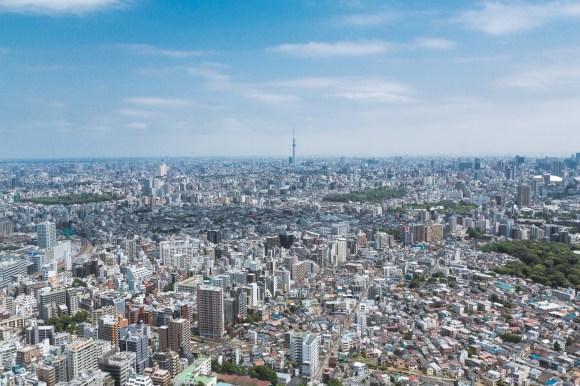
While they might look appealing to visitors, according to residents, these suburbs can be hell to live in.
Over the years, we’ve seen reports ranking everything from Japanese castles to anime and even Sanrio characters. While the results are usually aimed at showing the best of a certain category, now it’s time for a list that concentrates on revealing the worst, with a look at the most “hellish” areas to live in and around Tokyo.
Nikkan Spa magazine compiled the unusual list with the help of a Japanese real estate agent, who identified the following top three characteristics for determining a hell-like suburb: 1. There are few businesses in the area selling less than the bare necessities, and it’s dark and lifeless at night 2. It’s very likely that the real estate value will drop 3. In the event of a disaster, it’s a very risky area to be in.
According to the real estate professional, people often move to certain areas of Tokyo because they’ve been made popular in the media as great places to live, but once they actually live there, it turns out to be an entirely different story. So, without further ado, let’s take a look at the five areas that are so far from being great they’ve been described as areas that are “like hell to live in”.
5. Makuhari (Chiba Prefecture)
The Greater Tokyo Area fans out to incorporate the neighbouring prefectures of Kanagawa and Chiba, where many residents commute in and out of the capital each day. Makuhari in Chiba, which is home to the Makuhari Messe convention complex, is a seaside town with parks and beaches, making it seem like an ideal place to live. However, according to a 27-year-resident of the area, there are only two convenience stores in her residential zone, and they both shut at 11 p.m. On the weekends, parking is a nightmare, adding to the inconvenience.
4. Shirokane-takanawa (Minato Ward, Tokyo)
Home to a large number of foreign embassies, an address in the esteemed Minato ward of Tokyo is a big drawcard for many, and with Shirokane-takanawa’s convenient transport links and proximity to the centre of the capital, you’d think this would be a perfect place to take up residence. In reality, though, the area has a large population of elderly female residents, meaning everything shuts early at night, and the majority of restaurants are classy and expensive.
3. Kasukabe (Saitama Prefecture)
Located on the outskirts of Saitama Prefecture, this city is best known as the real-life setting for the Crayon Shin-chan manga and anime series, whose creator, Yoshito Usui, also lived in the area. For some, this might seem like a calm suburban oasis, with a lot of elderly people seen frequently around the station, but according to real estate consultant Osamu Nagashima, the population here has decreased sharply over the last decade, as the city’s youth have been leaving to find work in larger areas. With the local department store shutting its doors last year, property prices are also likely to decline here in future.
2. Kamakura (Kanagawa Prefecture)
Best known as the home of the Great Buddha of Kamakura, the second tallest bronze Buddha statue in Japan, this city draws thousands of tourists from Japan and around the world each year. Although the scenic landscape is often featured in movies, according to residents, it’s actually a nightmare to live here on weekends, as the large number of tourists creates huge traffic jams. One man who’s been living in the area for nine years says it takes two hours to drive a distance that should only take 15 minutes, so he and his neighbours often head out of town on the weekends to escape the madness.
1. Yanaka (Taito Ward, Tokyo)
At number one on the list is Yanaka, one of the few places in Tokyo to escape the fires and bombing of World War II. The lovely old-town atmosphere of this area makes it a popular destination for visitors on weekends, but one local resident in her 20s says it’s the worst area in terms of livelihood. At night, most of the stores close at 8 p.m, there aren’t many choices when it comes to dining out, and on weekends it’s stressful and difficult to move with all the crowds in the area. House prices are also said to be dropping in Yanaka, and with a large number of graves in the vicinity, a lot of the streets are dimly lit, making it a scary place for women to walk alone at night.
So there you have it, five of the most “hellish” areas to live in and around Tokyo, according to research conducted by the team over at Nikkan Spa. Personally, we’re more inclined to consider pressing public-safety criteria when it comes to defining a suburb from hell, so while these areas might have things going against them, we’re relieved to know that at least they don’t have to worry about the scourge of Japanese bosozoku biker gangs. But that could just be because young kids these days just can’t be bothered to join them anymore.
Source: Yahoo Japan News via Hachima Kikou
Top image: Pakutaso
Insert images: Flickr/Daisuke K, Flickr/Masashi Yanagiya, Flickr/Urawa Zero, Flickr/bryan…, Flickr/Yuko Hara